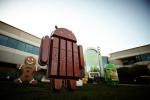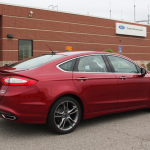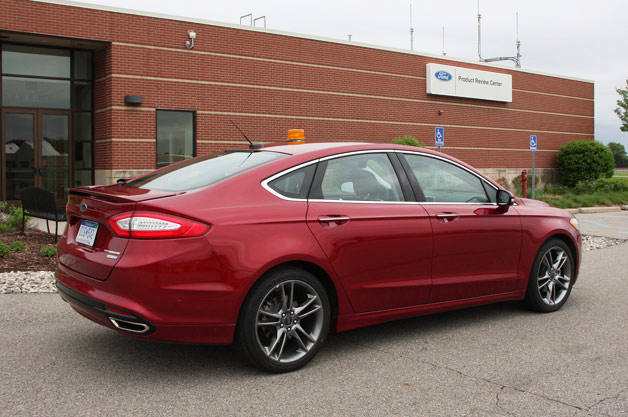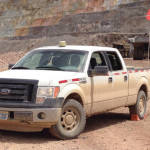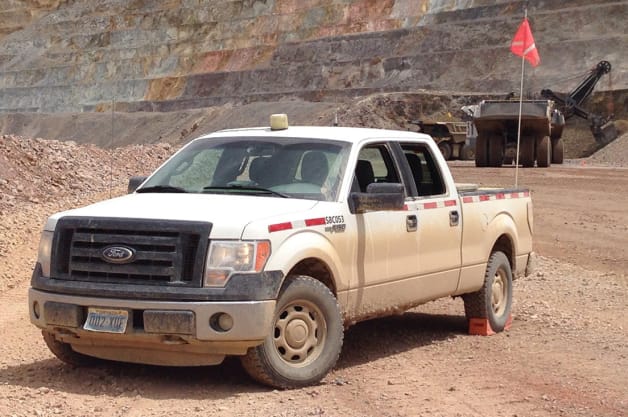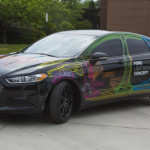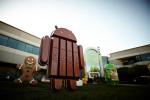Apple Maps is still too much of a mess to even get mentioned at WWDC
If you were hoping that Apple would announce big improvements to its Maps application on iOS 8 last week, you came away sorely disappointed since Apple didn’t mention the oft ridiculed mapping application at all. Now TechCrunch’s sources inform us that there was a reason for that: Apple Maps is apparently still too much of a mess to even warrant a mention at Apple’s big developers conference.
Read more here: Boy Genius Report
5 things you need to know about Apple’s big stock split
Apple shares will open under $100 for the first time in years on Monday, but don’t panic. As the company announced alongside its fiscal second-quarter earnings back in April, Apple is splitting its stock for the fourth time in the company’s history. The huge 7-for-1 split is obviously quite atypical and it will bring Apple’s share price from the $640-range down to the $90-range. But there’s plenty more to this story, and the Associated Press has put together a simple list containing 5 key things you need to know about Apple’s split.
Read more here: Boy Genius Report
LG G3 blows rivals out of the water in battery life tests despite monster specs
LG’s recently announced flagship Android handset has monster specs, including a 5.5-inch 2K display that has no rival – at least when it comes to flagship handsets from leading Android manufacturers – but that doesn’t mean the device won’t offer amazing battery life. In Phone Arena‘s G3 battery life tests, the handset came on top of the competition, beating every top Android handset released this year, including the Galaxy S5.
Read more here: Boy Genius Report
Apple’s iBeacon will soon have an Android rival
Google is working on offering Android users features based on elements in their proximity, including people, places and things, Android Police reports. Google’s “Nearby” feature for Android will apparently be similar to Apple’s iBeacon technology that’s already used in Apple retail stores and other locations to deliver notifications and trigger certain features for iOS users.
Read more here: Boy Genius Report
Ford bringing adaptive steering to the masses [w/video]
Filed under:
Within the next year, Ford will offer a brand-new adaptive steering system (unimaginatively dubbed “Ford Adaptive Steering”), and this week, the automaker invited us out to its proving grounds in Dearborn, MI to get a taste for how its new setup works. In function, Ford’s system doesn’t greatly differ from the majority of other adaptive steering units already on the market from companies like Audi or BMW, but consider this: Ford will be the first non-luxury automaker to offer this technology, and uniquely, the whole system fits inside the car’s steering wheel.
Ford’s engineers have worked hard to create a system that can be tacked on to the company’s full lineup of cars, trucks and utility vehicles, and says that the adaptive steering will be uniquely tuned for each specific vehicle. The automaker will not confirm exactly which vehicle will launch with this technology, but for the purpose of our preview, we tested the technology in a 2014 Fusion – a vehicle with already-good behind-the-wheel feel, one that the company says best demonstrates its current steering efforts.
Ford bringing adaptive steering to the masses [w/video]
Ford bringing adaptive steering to the masses [w/video] originally appeared on Autoblog Canada on Sun, 08 Jun 2014 14:00:00 EST. Please see our terms for use of feeds.
Permalink | Email this | Comments
Read more here: Ford News
How Ford secretly used customers to test its aluminum F-150 [w/video]
Filed under:
Automakers getting clever about disguising development vehicles isn’t anything new. Between mules wearing the sheetmetal of other cars and prototypes decked out in as much camouflage as is practical, automakers know how to make it very difficult for the general public to get an exact idea of what kind of vehicle is in development. Ford, though, is rapidly becoming the master.
We knew that the Blue Oval originally tested the durability of the aluminum construction being used for the 2015 F-150 by building an all-aluminum 2014 truck and entering it in the Baja 1000 off-road race. That’s no longer a secret. What we didn’t know, though, is that the aluminum development dates back to before even that, and that some of the people in question had no idea what it was they were working with.
Ford says this is the first time prototypes have ever been handed over to the public.
See, way back in 2011, Ford built six examples of the then-current F-150 generation, using aluminum for the most-abused part of the truck, the cargo box. Those trucks were then delivered to three outfits across the country – Barrick Mining in Nevada, Walsh Construction in Pennsylvania and Alabama and a utility provider in North Carolina. The catch was, not a single group knew they were testing a vehicle with such intensive aluminum work. While this strikes us as a slightly risky move, it seems to have paid off for Ford.
“This secret testing almost immediately yielded results and lessons we have rolled into the all-new F-150,” said Denis Kansier, the F-150 prototype lead engineer. “For example, we made the cargo box floor thicker to improve strength, and we made modifications to the tailgate based on lessons we learned through customer usage.”
Meanwhile, the trucks that were loaned out are still in use. The Barrick trucks cover 160 to 483 kilometres (100 to 300 miles) per day and, between the two, have over 240,000 kilometres (150,000 miles) on the clock. The North Carolina trucks cover around 320 kilometres (200 miles) per day, while the Walsh trucks helped put together a hydroelectric dam and a highway interchange.
According to Ford, this is the first time prototype vehicles have ever been handed over to the public. “Our customers demand the highest levels of toughness and productivity – so we wanted to test the truck outside, in the harshest conditions and in the hands of real customers – with no limits,” said Larry Queener, the F-150’s program manager. “But we did not want these customers to know what was different. So, when we gave them the prototype vehicles, we told them to use the trucks like their other hard-working Ford trucks, and we would be back to follow their progress.”
Take a look below for a video and press release on Ford’s testing, and then hop up top for images of the clandestine aluminum-box trucks in action.
How Ford secretly used customers to test its aluminum F-150 [w/video]
How Ford secretly used customers to test its aluminum F-150 [w/video] originally appeared on Autoblog Canada on Sun, 08 Jun 2014 11:59:00 EST. Please see our terms for use of feeds.
Permalink | Email this | Comments
Read more here: Ford News
Ford builds Lightweight Concept with Fusion shell [w/video]
Filed under:
It’s a fairly well known fact that removing weight from a car is essentially a panacea for many of the modern automobiles problems. Does it handle like crap? Remove weight. Underpowered? Don’t add power; trim the fat. Need to improve fuel economy? It’s diet time.
Actually executing a major weight reduction program, though, much like with human beings, is no easy task. Unlike you or I, where motivation is the issue, the prohibitive measure in trimming a car’s waistline is money. Lightweight materials are expensive, with carbon fibre and carbon-fibre reinforced plastic still primarily in the domain of higher end vehicles. Even aluminum construction, pioneered on a mass-produced level by Audi and Jaguar, is only now starting to make its way into the mainstream, thanks to the upcoming Ford F-150.
With this concept, though, Ford is attempting to show that a mass-produced, lightweight vehicle isn’t too far off. This is the Lightweight Concept, and while it may look like a Fusion, it weighs as much as a Fiesta. For reference, the lightest Fusion available to the public is the 1,507-kilogram (3,323-pound), 2.5-litre model with a manual transmission. A manually equipped, 1.6-litre Fiesta, meanwhile, is just 1,151 kilograms (2,537 pounds).
The nearly 25 percent weight reduction is thanks to the intensive use of aluminum, not to mention large dollops of high-strength steel, carbon fiber and chemically laminated glass.The Fiesta’s three-cylinder EcoBoost engine, tiny tires and lightweight wheels round out the package.
We wouldn’t count on picking a 1,150-kilo (2,500-pound) Fusion up from you local dealer in the near future, though.
“Our goal was to investigate how to design and build a mixed-materials, lightweight vehicle that could potentially be produced in high volume, while providing the same level of safety, durability and toughness as our vehicles on the road today,” Matt Zaluzec, Ford’s technical leader for global materials and manufacturing research, said in a statement. “There’s not a one-size-fits-all approach to light-weighting. The Lightweight Concept gives us the platform to continue to explore the right mix of materials and applications for future vehicles.”
Here’s hoping some of these lightweight measures make to market in a wider form sooner rather than later. Maybe one day we’ll even get a lightweight Mustang. Take a look below for the official press release from Ford.
Ford builds Lightweight Concept with Fusion shell [w/video]
Ford builds Lightweight Concept with Fusion shell [w/video] originally appeared on Autoblog Canada on Sat, 07 Jun 2014 18:00:00 EST. Please see our terms for use of feeds.
Permalink | Email this | Comments
Read more here: Ford News
Philips is already working on a killer iOS 8 ‘smart home’ app
Apple just announced its HomeKit development platform for “smart home” apps earlier this week but the creative minds at Philips have revealed that they’re already hard at work making an app to take advantage of it. Philips this week sent out a message on Twitter showing off a concept prototype for a new iOS 8 widget that would give you control over Philips’ Hue wireless lighting system from your iPhone’s notification center. As you can see from the picture posted below, the concept widget would let you select from several different lighting settings on iOS 8, including color schemes such as Sunset and Deep Sea. We’re sure this is going to be just the first of many new “smart home” apps developed for the iPhone in the coming months and we can’t wait to see what other developers come up with.
Read more here: Boy Genius Report
KitKat’s install base is much higher in North America than you think
At Apple’s World Wide Developers Conference this week, CEO Tim Cook bashed Android for its fragmentation by showing a slide with Android’s latest version, KitKat, on only 9% of all Android phones. While it’s true that KitKat’s market share is still very low throughout the entire world, analytics firm Chitika released new Android numbers on Friday that show KitKat has jumped to 37% in North America. Chitika attributes this increase mostly to the three most recent Samsung Galaxy S phones being updated to KitKat, which obviously makes sense since Samsung is the most popular Android smartphone maker.
Read more here: Boy Genius Report
Legere will reportedly become Sprint’s CEO if it buys T-Mobile
Verizon and AT&T probably aren’t fans of Sprint’s plan to buy T-Mobile and now they have yet another reason to hate it: Apparently it will make T-Mobile CEO John Legere more powerful. Bloomberg’s sources say that Legere, the notoriously foul-mouthed CEO with a reputation for shameless publicity stunts, will stay on as CEO of a newly merged Sprint and T-Mobile if the two companies’ reported $32 billion merger proposal passes regulatory inspection. Jonathan Chaplin, an analyst at New Street Research, tells Bloomberg that giving Legere this additional power will make him “twice as crazy” because he’ll have “double the asset base to work with.”
Read more here: Boy Genius Report












